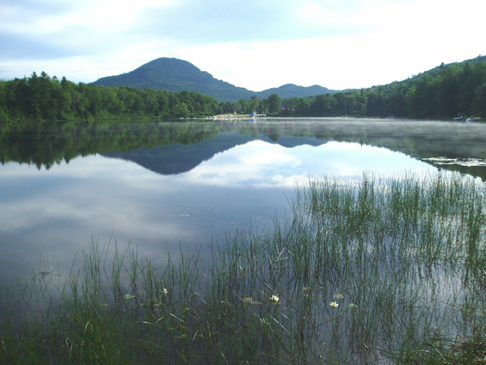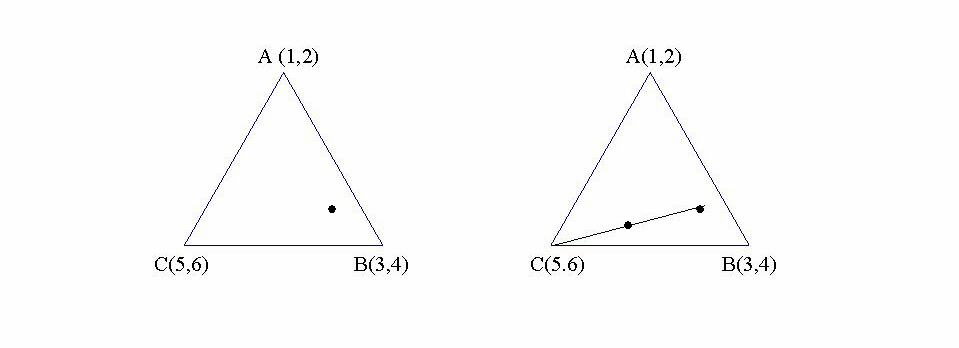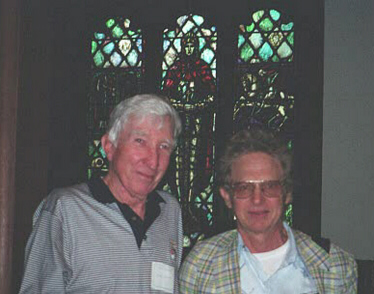BEAUTY
in SCIENCE and SPIRIT
"The
most beautiful thing we can experience is the mysterious. It is the
source of
all true art and science." (Albert Einstein)
INTRODUCTION
Origin of this Book
When was your first experience of beauty? My first memory of beauty was at age five, when my father helped me climb to the top of Jay Peak in Northern Vermont by taking off his belt and pulling me up the steepest parts of the rocky tail. The memory of that spectacularly beautiful mountain-top experience made a lasting impression.

When I was fifteen, my Boston Latin School English teacher gave us an assignment to write a poem. I wrote the following sonnet:
THE SUMMIT
To the top of the mountain one-day I did go,
To see all the scenes that a summit can show.
For the work and the toil up the long yet small trail,
The perspective was grand where good views do prevail.
To the right to the left, all around from the heights,
Are the things, which make wonderful, colorful sights:
The small farmhouse and barn, the big mill in the town,
They do all have a place as the climber looks down.

The small ponds, like some emeralds clear,
Are all scattered about, like dewdrops so sheer.
The big lake, like a sheet of the clearest of glass,
Which is blue as the sky that does over us pass.
If immense and important or tiny and small,
The Great God has a place in the world for us all.
Having grown up in rural Vermont, the son of a Methodist minister and a music teacher, my student life in an MIT (Massachusetts Institute of Technology) dormitory was a culture shock. There I met for the first time people for whom the scientific worldview was their "ultimate concern," a term that theologian Paul Tillich had defined as religion. His picture appeared on the cover of TIME Magazine on 16 March 1959. I later took his "Theology of Culture" course at Harvard University.
Paul Tillich (1955) described his mystical "One Moment of Beauty" as follows.
"Divine revelation comes to few men, but understanding of it came to me one moment 36 years ago. I looked, for the first time, at beauty revealed by a man who had been dead more than 400 years. As the son of a Protestant minister in eastern Germany in the days before World War I, I had grown up in the belief that visual beauty is unimportant…
Strangely, I first found the existence of beauty in the trenches of World War I. At 28, I became a chaplain in the German army and served for five ugly years until the war ended. To take my mind off the mud, blood and death of the Western Front, I thumbed through the picture magazines at the field bookstores. In some of them I found reproductions of the great and moving paintings of the ages. At rest camps and in the lulls in the bitter battles, especially at Verdun, I huddled in dugouts studying this "new world" by candle and lantern light. But at the end of the war, I still had never seen the original paintings in all their glory.
Going to Berlin, I hurried to the Kaiser
Friederich
Museum. There on the wall was a picture that had comforted me in
battle:
Madonna with Singing Angels, painted by Sandro Botticelli in the
fifteenth
century. Gazing up at it, I felt a state approaching ecstasy. In the
beauty of
the painting there was Beauty itself. It shone through the colors of
the paint,
as the light of day shines through the stained-glass windows of a
medieval
church. As I stood there, bathed in the beauty its painter had
envisioned so
long ago, something of the divine source of all things came through to
me. I
turned away shaken.
That moment has affected my whole life, giving me the keys for the
interpretation of human existence, brought vital joy and spiritual
truth. I
compare it with what is usually called revelation in the language of
religion.
I know that no artistic experience can match the moments in which
prophets were
grasped in the power of the Divine Presence, but I believe there is an
analogy
between revelation and what I felt. In both cases, the experience goes
beyond
the way we encounter reality in our daily lives. It opens up depths
experienced
in no other way. I know now that the picture is not the greatest. I
have seen
greater since then. But that moment of ecstasy has never been repeated."
This experience of beauty in art reminded me of MIT President Killian's saying during the dedication of the modernistic Kresge auditorium and chapel in 1955: "Science and art spring from similar creative impulses." Architect Eero Saarinen had designed the auditorium to be dome-shaped, an eighth of a sphere that rested on three points of an equilateral triangle. The chapel was cylindrical with a modernistic steeple (see below.)

Steeple of the MIT Kresge Chapel
"Science and art
spring from
similar creative impulses" (Killian).
MIT Prof. Giorgio de Santillana's (1961) course "The Origins of Scientific Thought" showed how the mystical beauty of music led Pythagoras, about 590 B. C., to discover that the harmonious intervals of the musical scale could be expressed as simple ratios. The string length ratio of the octave is 1 to 2, that is, the string length of a note at the bottom of an octave is twice that of the high note at the top. Pythagoras was the founder of a spiritual order based on the mystical meaning and value of numbers. He exemplifies the emergence of mathematical beauty and ultimately science from the mystical and the spiritual. Today, science and mathematics often influence art and music; these ideas are expanded in Chapter 1 "From Art to Science to Art."
After completing my Ph.D. in Physics at Brandeis University in 1966, I became the leader of a scientific research and development team at what is now called the AF Research Laboratory. There we did fundamental research on the properties of microwave ultrasonic surface acoustic waves (SAWs), which are now used as filters in radars, TVs, and cell phones. We also found that genetic algorithms, computer models of the Darwinian evolutionary process of mutations and natural selection, are very effective in optimizing the design of high- performance microwave antennas (Chapter 5).
In 1995, I took an early retirement to have more time to relate my scientific career to my spiritual roots. I presented workshops at the Institute of Religion in an Age of Science Conferences at Star Island, off Portsmouth, NH (www.iras.org). The John Templeton Foundation awarded me a grant to teach my philosophy course, "Science and Religion: Cosmos to Consciousness," at the University of Massachusetts Lowell. This book builds on and extends the ideas expressed in this course.
Mountain landscapes, sunsets, flowers, and snowflakes are beautiful to me. I was amazed to learn through Gleick's (1987) Chaos: Making a New Science that that the beauty of nature has an underlying mathematical structure called fractals. When Stephen Wolfram published his A New Kind of Science in 2002, many of its intricate patters struck me as being beautiful and similar to Madelbrot's Fractal Geometry of Nature (1983). Similarly, beauty in religious art and in sacred spaces can be seen from the pyramids to cathedrals. This led to the idea that science and spirit both have beauty in common. Both are beautiful to me. Beauty has many facets. How might they be defined?
<>SEXUAL SELECTION AND BEAUTY
"If everyone were cast in the same mold, there would be no such
thing as beauty." (Darwin 1993).
Beauty is "the harmony of contrasts" (Whitehead 1933). Beauty resides in the contrast between order and randomness. Complete order can be boring and total randomness unattractive. Beauty walks the razor's edge between monotony on one side and chaos on the other (Haught 2000). A musical theme repeated without modest variations can be boring. Extreme variations can be dissonant and chaotic. Beauty is the delicate harmony between order and chaos. The novelty of contrasts overcomes the monotony of shear order.
Beauty emerges from the delicate dance between mystical, subjective forms and the mathematical, objective functions that maintain the universe and life. This interplay is similar to that between the right- and left-brain, between the holistic-subjective and the logical-objective. The subjective and individual pole can depend on preferences, tastes, cultural conditioning, and life history, leading to the saying, "beauty is in the eye of the beholder." The objective pole, on the other hand, is an essential and ineradicable part of human nature, which has contributed to our survival as a species, according to psychologist Nancy Etcoff, in her book Survival of the Prettiest: The Science of Beauty (1999). The objective aspect of beauty is trans-cultural. Babies are regarded as beautiful in all cultures. If they were not, they would not be cared for, and humans would become extinct. In addition to natural selection, sexual selection is involved in the conception of babies. Sexual selection is influenced by what we find beautiful in the opposite sex. "Philosophers ponder beauty and pornographers proffer it"(Etcoff 1999).
Objective beauty can be measured. For example, when men see a beautiful woman, their testosterone hormone level increases. The more beautiful the woman, the higher the testosterone level, which is measurable. Nancy Etcoff also observed that more money is spent on beauty than on education or social services in the United States. Tons of makeup-1484 tubes of lipstick and 2055 jars of skin care products- are sold every minute. During 1996 a reported 696,904 Americans underwent voluntary aesthetic surgery that involved tearing or burning their skin, shucking their fat, or implanting foreign materials. People yearn for the essential beauty of the human body expressed by such sculptures as Venus de Milo and Michaelangelo's David.
Mystical beauty is hard to define, but you know it when you experience it. Mystical beauty is ineffable, experiential, holistic, energizing, and a priori. It resonates with our innermost being and is based on an immediate experience having ultimate and eternal value of which we are intuitively aware. The merger of individual consciousness with the cosmic whole has mystical beauty. It requires participation with the whole being in contrast to detached observation.
The colorful cave paintings of animals drawn on the limestone walls in Chauvet, France have mystical beauty. These paintings have clean, sweeping lines, some of which are shaded to one side as though to convey three-dimensionality. It is amazing that human beings living 30,000 years ago could create such dynamic, vibrant paintings of animals, which can still touch us today. As Albert Einstein said, "The most beautiful thing we can experience is the mysterious. It is the source of all true art and science."
John Keats (1819) is describing subjective, mystical beauty in the conclusion of his "Ode on a Grecian Urn,"
Beauty is truth, truth beauty.
That is all ye know on earth and
All ye need to know.
 April
blossoms in front of John Keat's House, Hamstead, London
April
blossoms in front of John Keat's House, Hamstead, London
He clarified this in his letter to Bailey, dated 22 November 1817. "I am certain of nothing but the holiness of the heart's affection and the truth of the imagination. What the imagination seizes as Beauty must be Truth - whether it existed before or not. I have the same idea of our passions as Love, they are in their sublimity creations of essential beauty."
Great art, music, literature, and science express beauty and truth. In the absence of truth, beauty is commonplace and can even be ostentatious. In the absence of beauty, truth sinks into triviality and loses is motivating power. "Truth matters because of beauty" (Whitehead 1933). The mathematician Hermann Weyl was quoted as having said not long before he died, "My work always tried to unite the true with the beautiful, but when I had to choose one or the other, I usually chose the beautiful." The truth of beauty for science, however, must ultimately be capable of being empirically verified (McAllister 1998). As Whitehead said, "truth is confirmation of appearance to reality." Hence, objective beauty is closer to scientific truth than subjective, mystical beauty.
Physicist Steven Weinberg (1992) sees scientific beauty as more than a personal expression of aesthetic pleasure. Objective beauty is much closer to a horse trainer's enthusiasm for a beautiful racehorse. This sort of beauty can be objectively verified: can the horse win a race? Similarly, can a beautiful scientific theory explain the natural world?
Physicist Albert Einstein (1959) described scientific, mathematical beauty as follows: "A theory is more impressive the greater the simplicity of its premises, the more different kinds of things it relates, and the more extended is its area of applicability." Scientific beauty has (1) simplicity, (2) comprehensiveness, and (3) the brilliance to illuminate new phenomena. Shortly after Einstein published his theory of special relativity, which predicted the equivalence of mass and energy, he was told that an experiment with electrons in a vacuum contradicted his predictions. He replied that the comprehensiveness of his theory, which applied to the whole universe, could not be refuted by a single experiment. Later, the experiment was found to be in error due to a leak in the vacuum system. This exemplifies the comprehensive beauty of a scientific theory, which is supported by quantum physicist, Paul Dirac's, statement, "It is more important to have beauty in one's equations than to have them fit experiment." He meant that a leap of creative imagination may be so compelling in its elegance that physicists will be convinced of the truth of a theory before it is subjected to experimental test.
Einstein's search for a consistent theory for all of the forces in the universe (or Theory of Everything) is being continued by Steven Weinberg. In Weinberg's book, Dreams of a Final Theory, he describes the emerging Theory of Everything (TOE) as beautiful. TOE will be expressed as a system of interlocking equations that will describe all the forces (i.e. gravity, electromagnetism, strong and weak nuclear forces.) It will be beautiful because it will be elegant, expressing the possibility of unending complexity with minimum laws, and be symmetric, because it will be invariant in time and space. Steven Hawking in his Brief History of Time said that the Theory of Everything will enable us to know the "Mind of God" in all its simplicity, comprehensiveness, and brilliance in illuminating new phenomena.
The delicate balance between the mathematical-objective and mystical-subjective leads to the complementary beauty of science and spirit. The scientific account of the origin of the universe complements that of spiritual stories. Each can be beautiful in its own way, because spiritual and scientific stories have different purposes. Spiritual stories answer "why" and give guidance and motivation for living now and in eternity. Scientific theories explain "how," give a coherent rational account of measurements, and make predications. Integration of the "how" with the "why" can lead to a beautiful new story that transcends national and cultural differences.
The complementary beauty of science and spirit is analogous to physicist Niels Bohr's comlementarity principle for the particle-wave duality of small elementary particles. Most of us think of electrons as being particles, but the geometric diffraction pattern observed when electrons are scattered off a crystal can only be explained by their wavelike nature. Similarly, the beautiful interference patterns of light is explained in by its wave-like property. However, the shot noise observed when low intensity light is measured with an electronic detector is explained by light's particle property. Light particles or quanta are called photons. A pioneer of this concept, physicist Max Planck (1977) said: "There can never be any real opposition between religion and science: for the one is the complement of the other."
The complementary beauty of science and spirit builds on Stephen Jay Gould's Rocks of Ages : Science and Religion in the Fullness of Life. Gould wished to eliminate conflicts between science and religion by saying the each has its own domain, area of validity, or magisteria. The natural world belongs exclusively to science and the moral to religion. He believed that science will never explain away religion nor can religion ever incorporate the findings of science. My vision of science and religion's complementary beauty is more optimistic, however, in believing that modern cosmology can be incorporated into a beautiful new story (Chapter 11), just as the creation story in the First Chapter of Genesis was based on the cosmology of its day.
Chapter Overview
"If nature were not beautiful, it
would not be worth knowing." Scientist-Mathematician Henri
Poincaré
Charles Darwin explained the evolution of "forms most beautiful" by variations and the natural selection law in 1859. Yet the intelligent design community still doubts Darwin (Dembski & Ruse 2004). How could a process having randomness lead to life and even beauty? Furthermore, the efforts of the Discovery Institute in Seattle, WA to have the intelligent design and evolution controversy (Chapter 2) taught in public school biology classes has raised a number of other questions. What is spirituality? What is science?
Spirituality and mystical beauty are similar in the sense that both are expressed in terms of symbols. Spiritual transformations are the source of the world's religions: the enlightenment of the Buddha under the fig tree, the baptism of Jesus, St. Paul's visionary conversion on the road to Damascus, and the revelation of Mohammed in the cave. Spirituality is the a priori and inspirational source of religion. Spirituality is unencumbered by organizational failings and historical atrocities performed in the name of religion. Spirituality concerns us ultimately, is of greatest importance to us, and gives guidance for living.
To answer, "What is science?" Chapter 3 will trace the emergence of modern cosmology from ancient stories and astrology. The mathematician-scientist Henry Poincaré answered the question, "Why study the natural world?" with "If nature were not beautiful, it would not be worth knowing." The awesome beauty of nature lured ancient people to explain the world with myths, illumined by spiritual art. The mathematical beauty of modern science emerged from these ancient stories. The deciphering of nature’s code over thousands of years is an exciting detective story (Davies 1984). Today Einstein's language of mathematics frames the beautiful universe, from the bending of starlight to black holes.
Was there not a certain mystical beauty in the ancient myths that used to explain the natural world? The Greek god of the Sun, Helios, rode a sun-drawing chariot pulled by horses through the sky. The journey of the Sun, naturally, began in the East and ended in the West, at which point Helios completed his daily rounds and floated back to his Eastern palace in a golden bowl. In the first Chapter of the Bible, Genesis 1, the Divine Spirit moved on the face of the waters creating light from darkness and order from chaos. This is expressed in the beautiful music of Haydn's "Creation Oratorio" and Michaelangelo's paintings in the Sistine Chapel.
Science began emerging as a separate discipline from myth and
spirituality
when the Greeks explained the rising and setting of the sun by the
rotation of
the sun about the earth (Chapter 3). The planets revolved around the
earth on
crystalline spheres and made the beautiful "music of the spheres,"
because their distances from the earth had the same proportions as the
musical
scale. Ptolemy in the 2nd century AD developed the
mathematics for
this geocentric cosmology, which astronomers used to predict the motion
of the
planets until the 16th century. In 1543, Copernicus proposed
his new
theory of the "sun at the center of the most beautiful temple."
In the 17th century, Newton discovered the laws of gravity
and
dynamics that predicted the motion of "this most beautiful
system
of the sun, planets, and comets." In 1859, Charles Darwin’s Origin
of
the Species explained the evolution of "forms most beautiful"
by variations and natural selection. Even though our concepts of the
universe
have changed, we perceive it as awesome and beautiful. In this sense,
beauty is
eternal. Astronomer Mario Livio (2000) has called this the cosmological
aesthetic principle.
The transition from mystical to mathematical beauty is evident in American thought, as described in Chapter 4, "Beauty: From Theology to Fractals." In the 18th century, Jonathan Edward's theology saw nature as evidence of God's beautifying activity. In the 19th, transcendentalists Emerson and Thoreau perceived God as being in nature. In the 20th, Benoit Manelbrot discovered the mathematical beauty of nature.
In his Fractal Geometry of Nature, Mandelbrot showed that mountains do not have the straight edges of cones in Euclidean geometry and clouds are not perfect circles, but have beautiful fractal edges. He noticed that tree branching from trunks to twigs have the same fractal scaling as our lungs, from trachea to bronchi. Each branching generation is a fraction smaller than the one before, therefore the term fractal. Fractal statistics, which is like pulling a card from a stacked deck, can account for variations in the stock market, our weather, tree rings, and variations in the height of the Nile River. As we will see, fractals can be generated by computer algorithms which have random and deterministic elements, as does evolution. This interplay between chance and necessity leads us from the beautiful creation story of Genesis 1, where the Divine Spirit created order out of chaos, to the evolutionary creativity of variations and natural selection.
Nevertheless, many still doubt Darwin, like Huston Smith, author of the best-selling The World’s Religions, who at the American Academy of Religion Meeting in November 2000 said, "I do not believe that God could have created us in his image by the mutations of the genes." This was Smith's way of denying that evolution can explain the origins of human spirituality. Many people agree with Smith. Einstein in criticizing the statistical nature of the theory of quantum mechanics said: "God does not play dice." In Chapter 5, "Beautiful Fractals: 'Does God Play Dice?'" we will learn how the beautiful fractals patterns seen in snowflakes and the branching of plants can be analyzed to shed light on this question.
In answering it, we need to understand that local randomness and global determinism can coexist to create orderly, even beautiful patterns such as a self-similar structure called a fractal. The interplay between randomness and determinism is analogous to the mutations and natural selection of Darwinian evolution.
How could a random process lead to order and even beauty? Randomness
by
itself leads to disorder. However, randomness coupled with a
deterministic law,
is creative. We will see how the simple computer algorithm below can
generate
the Sierpinski triangle or fractal triangle. The sides of the large
white
triangle in the center are one half of whole triangle. Similarly, the
sides of
the three smaller triangles are one quarter of the whole triangle. Each
generation of smaller triangles is scaled down by the same fraction,
one-half, of the one before, hence the term fractal.
Sierpinski or Fractal Triangle

The Chaos Game is a simple algorithm for generating the Sierpinski triangle or fractal triangle (top). Randomly draw a point as shown in the Left Figure above. Next, roll a dice to find the direction of the next point. In the Right Figure above, the roll of a dice gave a 5 or a 6, which corresponds to vortex C. Then apply the global rule: draw a point half way to C(5,6). This algorithm is repeated again at each new point to form the black granular parts of the Sierpinski triangle. The position of each black point or dot in the Sierpinski triangle is determined by both a random and a deterministic element.
This computer algorithm thus simulates the randomness and lawfulness of Darwin's theory of evolution. "Does God play dice?" An answer is "yes" and 'no." Yes, if one considers the random nature of evolution and fractal statistics. No, if one considers nature's globally deterministic laws and rules. Chaos theorist Joseph Ford’s answer, "God plays dice (randomness), but they are loaded dice (by global laws)!"
Chapter 6, "A Theology for the Evolution of 'Forms Most Beautiful': Haught, Teilhard de Chardin, and Tillich" deals with the evolution of life, describes the tragic beauty that emerges from suffering and death, and discusses the goal and direction of evolution. It compares Tillich's "End of History" with Teilhard's "Omega Point" towards which evolution is converging.
Chapter 7, "The Beauty and Power of Theology Touching Technology" describes the fruitfulness of theology working together with technology. The beauty of medieval cathedrals symbolizes the power of technology and theology. The theology of a transcendent God inspired the construction of these magnificent structures. The technology of flying buttresses on the outside walls enabled them to reach "celestial heights" without collapsing. Another example is "The Beautiful Holy Land," (Chapter 8 ) where modern irrigation technology is working with theological religious motivation to make the desert bloom.
John Updike (1986) wrote "Whenever theology touches science, it get burned." Technology does indeed challenge traditional religious beliefs. I once had the privilege of discussing my more positive ideas with him.

Writer John Updike & Paul H. Carr discuss
"When theology touches science, it always gets burned," (Updike1986) 14 July 2001.
An example of technology working without theological moral constraint is the exploitation of nature's beauty by our secular society, as in Chapter 9, "The Beauty of Nature vs. its Utility: the Environmental Challenge." The environmental challenge is to balance ecology with economics. A. Z. Amin (2000), director of the UN Environmental Program has said: "Combining a knowledge of the earth sciences with the forces of spiritual values aims at transforming our fundamental relation with the earth from one of destruction to redemption." The power of spiritual values and the intrinsic beauty of nature can hopefully lead to a global ethic and a moral imperative to implement more efficient, renewable technologies. An environmental success story is the consecration and conservation of Thoreau's Walden Pond as a sacred site.
Religion regards nature's beauty as evidence of divine creativity. Beautiful art and music are not only expressions of human creativity; they inspire creativity (Chapter 10). Meditating on beautiful art and listening to uplifting music can stimulate new insights. The highly symmetric Dharmaraja mandala, a symbol for Buddhist meditation, was the source of inspiration for IBM scientists, Alex Muller and Georg Bednorz, who won the 1987 Nobel Prize for their discovery of the highly symmetric, copper-containing, high-temperature superconductors (Holton 1996).
Creativity can be a link between science and spirituality. The four-step process of scientific insight is similar to that of spiritual transformation. Both are creative. Without insight there would be no scientific discoveries. Without transformation and wisdom, spirituality would not be able to give meaning to such issues as the sickness and death that challenge our lives. Scientific creativity results in new ideas such as Darwin's theory of evolution, which contradict established ideas and therefore require the courage to create. Spirituality can be a source of this courage.
The scientific story of the origin and evolution of the cosmos has intrinsic beauty and transcends national and cultural differences. The images of modern science and cosmology have aesthetic beauty and the potential to birth a beautiful new story (Chapter 11). Beautiful fractal figures can be drawn using computer algorithms, which have both randomness and global laws. Darwin's theory of evolution is similar to fractal analysis: the randomness of mutations and global natural selection. The evolutionary interplay between chance and necessity has emerged from the creation story of Genesis 1, where a Divine Spirit created order out of chaos and light from darkness. Hopefully, this Old Story will nurture the emergence of a New Story. The New Covenant (New Testament) of Christianity had its roots in the Old Covenant (Old Testament) of Judaism. Islam emerged from the Hebrew-Judaic tradition and Christianity. Buddhism grew out of Hinduism. The passage from mystical to mathematical beauty portrays the emergence of science from spirituality and nature. Chapter 1 describes the emergence of science from art.
VIDEOS:
- Paul
Carr discusses beauty and creativity on Bedford Community TV http://picasaweb.google.com/henryhonda57/2PaulsDiscussBeauty/photo#s5107994212430903842
- Lilo's
fireside chat with her Dad, go to http://youtube.com/watch?v=DwGvE5XpicA
--This book was published in
October 2006 by www.BeechRiverBooks.com/id08 Center Ossipee, NH, tel 888-874-6904 194
pages. 37
illustrations including 16 color plates. ISBN 0-9776514-7-9, $18.00
softcover,
$29.00 hardcover.
--To order, call Enfield
Distribution, 1 -
888-874-6904, or
visit
http://www.amazon.com/gp/product/0979377854 for
hardcover,
$29.00
http://www.amazon.com/exec/obidos/ASIN/0977651479 for
softcover,
$18.00,
SELECTED REFERENCES
Amin, Adnan Z. 2000. In Earth and Faith: A Book of Reflection for Action. eds. John T. Brinkman and Kusumita P. Pedersen (New York: Interfaith Partnership for the Environment/United Nations Environmental Program) pg. 4 http:// www.earthprint.com
Augros, Robert M., Stanciu, N. 1984. The New Story of Science: Mind and the Universe. Warner, NH. Principle Source Publisher.
Darwin, Charles. 1859. The Origin of the Species. Oxford University Press.
Davies, Paul. 1984. Chapter 4 "Symmetry and Beauty." Superforce:
The Search for a Grand
Unified Theory of Nature." New York, NY. Touchstone.
De Santillana, Geogio. 1961.The Origins of Scientific Thought: From Anixamander to Proculus, 500 B. C. to A. D. 500. New York: Mentor Books.
Etcoff, Nancy. 1999. Survival of the Prettiest: The Science of Beauty. Anchor Books, NY.
Haught, John F. 2000 God After Darwin: A Theology of Evolution. Westview Press
Hawking, Stephen W. 1988. A Brief History of Time: From the Big Bang to Black Holes. New York, NY. Bantam Books.
McAllister, James W. 1998. "Is Beauty a Sign of Truth in Scientific Theories?" American Scientist, vol. 86, pp 174-183, March-April
Raven, Peter H, 2002. Chairman, American Association for the Advancement of Science Resolution. 6 November 2002. http://www.aaas.org/news/releases/2002/1106id.shtml
Tillich, Paul. 1955. Parade, Sunday Star Ledger, 25 September 1955
Updike, John. 1986. Roger's Version. Alfred A. Knopf, New York.
Weinberg, Steven. 1992. Dreams of a Final Theory. New York, NY: Pantheon Books.
Whitehead, Alfred N. 1933. Adventures of Ideas. pp. 309 - 352 New York, NY. The MacMillan Company
Wolfram, Steven, 2002. A New Kind of Science, Wolfram- Media, Inc.